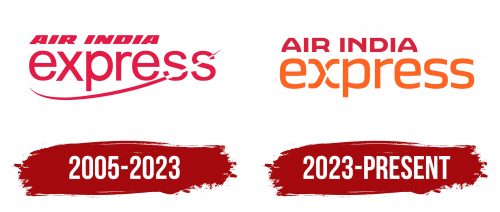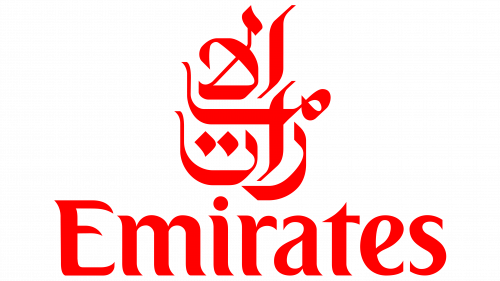The Air India Express logo represents the airline’s goal to offer efficient and affordable flights primarily between India and the Gulf countries. It symbolizes the commitment to making international travel more accessible, helping the Indian diaspora stay connected with their homeland. The logo emphasizes the airline’s focus on basic, no-frills services, reflecting a direct approach to air travel that caters to economy-class travelers looking for dependable and economical options.
Air India Express: Brand overview
The idea to establish Air India Express as an inexpensive branch of Air India, the national carrier, was hatched in 2004. The emergence of this program might be attributed to the growing competition from private airlines and the growing demand for reasonably priced air travel, particularly on routes connecting India with Gulf countries. The management of Air India and the Government of India viewed this project as a chance to improve their market position and cater to the expanding Indian diaspora in the area.
The company, owned by Air India Limited, was formally registered as a distinct business on April 29, 2005. This move marked a significant advancement in the national carrier’s plan to diversify its business and join the low-cost airline sector.
The new airline’s first flight from Thiruvananthapuram to Abu Dhabi occurred on April 29, 2005, the same day it was founded. Initially, the airline operated three Boeing 737-800 aircraft under lease, which enabled it to cater to medium-haul routes. These aircraft were selected because they were affordable and fit the market’s needs.
Between 2006 and 2007, when it first began operating, the airline aggressively grew its route network. The airline launched new routes that connected major Gulf cities, including Bahrain, Dubai, Sharjah, and Muscat, with several Indian towns. This expansion satisfied the increasing need for air travel among Indian migrant laborers and tourists.
When the company began operating flights to Singapore and Kuala Lumpur in 2008, it marked a major turning point in its growth. This expansion mirrored the airline’s goal of broadening its route network and penetrating markets outside the Gulf.
Tragically, on May 22, 2010, 158 persons lost their lives in the accident of Flight 812 during its landing at Mangalore Airport. The airline suffered greatly due to this incident, which prompted a review of operating protocols and increased safety measures.
After the 2010 accident, the company undertook extensive reorganization and enhanced safety protocols from 2011 to 2013. The airline focused on strengthening its financial results and winning back the trust of travelers.
The airline started a fleet replacement program in 2014 by purchasing brand-new Boeing 737-800NG aircraft. As a result, the airline boosted productivity and raised the standard of customer service.
The first profit reported since its founding was made in 2016. This accomplishment was the outcome of years of operational streamlining and restructuring.
In 2018, the company began broadening its domestic route network within India by launching new routes connecting the nation’s major cities. The airline hoped to lessen its reliance on foreign routes and diversify its business by making this change.
The airline maintained its route network expansion in 2019 by adding new international destinations and boosting flight frequency on its current routes. Additionally, efforts to enhance operational effectiveness and service quality continued.
Like the aviation sector as a whole, the company encountered extraordinary difficulties in 2020. The airline focused on sustaining important routes and guaranteeing passenger safety while it adjusted its operations to the new business realities.
Meaning and History
What is Air India Express?
Air India Express, a budget division of Air India, started operations in 2005 with its base in Kochi, India. This airline offers affordable domestic and international flights, particularly to South and Southeast Asian countries, including Malaysia, Singapore, UAE, and Qatar. With a fleet of over 25 aircraft, Air India Express serves more than 40 destinations. It provides passengers economical fares and basic services, primarily catering to economy-class travelers.
2005 – 2023
From 2005 to 2023, Air India Express has played a major role in India’s aviation industry, which is evident in its distinctive logo. The logo connects to its parent company, Air India, yet stands out with its unique features. The choice of a raspberry hue instead of bright red represents traditional Indian culture. It creates a visual link to Air India while highlighting the airline’s roots in national heritage.
The raspberry color also conveys warmth and welcome, which is crucial to the airline’s hospitality values. Air India Express focuses on attention to detail and passenger care, which the color choice enhances. The logo features bold letters similar to Air India’s, ensuring brand recognition. The forward tilt of the letters represents the airline’s continual progress and drive.
Additionally, a sleek line crossing the letters “ss” mimics a plane’s trail, adding dynamism to the logo and emphasizing the airline’s focus on flights. The larger font for the word “Express” underlines the airline’s role in fast and efficient transport.
2023 – today
The modern logo uses a uniform font to create a visually harmonious and cohesive brand image. The smooth curves in the letters, representing flight paths, make the logo easier to read and recognize and reflect the vast routes airliners travel. This design underscores the airline’s focus on air transportation, adding a dynamic and meaningful touch to the logo.
The letter X is split into three parts, becoming a central design element highlighting the airline’s global operations and extensive route network. It resembles a compass rose, symbolizing the carrier’s flights to various parts of the world and conveying the comprehensive nature of its services, designed to meet the needs of diverse passengers.
The logo’s color scheme also plays a crucial role in its perception. It retains the traditional red for the main company name, signaling activity, energy, and stability while introducing a warm orange for the word ‘Express.’ This choice brings a fresh look and conveys friendliness and comfort, emphasizing the airline’s commitment to high service levels and passenger comfort. The orange ensures that travel with the airline is safe, efficient, and enjoyable from start to finish.
Font and Colors
The Air India Express logo uses two different font styles for its name. “AIR INDIA” is in a bold, italicized sans-serif font that conveys a sense of movement and speed, essential for an airline. The exact font is hard to identify as it may be custom-made for the brand.
The word “express” is written in a soft, rounded, and non-bold font, contrasting the upper part of the logo and adding a sense of approachability and friendliness.
The logo’s colors are shades of red and orange. The red in the upper part symbolizes passion, energy, and strength, while the orange in “express” adds warmth and optimism. These colors reflect India’s culture and national colors, enhancing the brand’s recognition.
The kerning is uniform, ensuring the name is legible from a distance. The choice of fonts and colors makes the logo memorable and helps distinguish the airline from its competitors. The font and color choices reflect the airline’s dynamism and progressive nature.
FAQ
What is the meaning of the Air India Express logo?
The Air India Express logo captures the essence of the airline as a budget-friendly and dynamic carrier. It features the word “express” in a clear, sans-serif font, highlighting the airline’s focus on speed and efficiency. This choice in font reflects the airline’s straightforward service model, which prioritizes essential travel needs without unnecessary extras.
The red swoosh across the word “express” is a key logo element. It brings a sense of motion and liveliness, representing the quick and energetic nature of the airline’s services. This swoosh, evoking the image of a swiftly moving airplane, draws attention and adds a vibrant red to the design, a color often linked to excitement and passion. These features strengthen the logo’s fast, exciting, and efficient travel message.
What is the slogan of Air India Express?
The slogan of Air India Express is “Fly As You Are.” This phrase shows the airline’s dedication to providing a travel experience that meets each passenger’s unique preferences and needs. Owned by Tata and part of the Air India family, Air India Express focuses on ensuring that flying is comfortable, enjoyable, and accessible. This approach allows passengers to customize their experience, making each journey feel personal. “Fly As You Are” represents the airline’s commitment to making air travel about individual travelers’ choices and comfort.
What is the Air India Express code?
The airline code for Air India Express is “IX.” This two-letter identifier is crucial for aviation and travel systems worldwide. It simplifies booking flights, managing check-ins, and handling luggage. Airports and travel agents use this code to efficiently organize flight schedules and manage bookings. This makes travel smoother for both passengers and staff.
Are Air India Express and Air India the same?
Air India Express is a subsidiary of Air India, meaning it is part of the same company but operates as its entity. It is part of the Tata Group and a major player in various industries, including aviation. The airline runs a robust operation with over 2500 weekly flights to 31 domestic and 14 international airports. With a fleet of 70 aircraft, which includes 42 Boeing 737s and 28 Airbus A320s, Air India Express caters mainly to budget-conscious travelers, offering services for both international and domestic routes.
Air India, the parent company, covers a wider range of flight routes and typically offers more premium services, including long-haul international flights. Though both airlines share the same ownership and brand, they focus on different aspects of air travel and serve different market needs.






